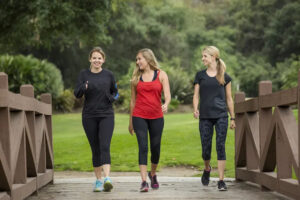Tom Sawyer, literature’s most lovable asshole, lured his friends into whitewashing a fence for him (and paying for the privilege!) by disguising work as play. But maybe the joke was on Tom, for the kids truly enjoyed their toil, and they were burning many more calories than our barrel-sitting antihero.
Your thinking about ordinary chores and simple actions can change the moment you redefine them as cardio. This even has a new name, high-intensity incidental physical activity (covet cardio is way cooler), and a scientific study on its benefits. Nowhere near a treadmill or stationary bike, there are hidden opportunities each day for scorching calories and shedding body fat. What is high-intensity incidental physical activity?
STANDING VS. SITTING
Standing desk manufacturers hype the calorie-burning benefit of their products. What does the science say? A meta-analysis of 50 studies on the energy expenditure of standing versus sitting determined that about .15 more calories per minute were burned by staying on your feet (men, because of their greater average muscle mass, burned .2, women .1). “Standing instead of sitting for six hours a daily, a 154-pound (70 kg) person expends an additional 54 cal per day (a cup of carrots), translating to the caloric content of about 5.5 lbs. (2.5 kg) of body fat in a year. Also, the standing may encourage you to move about more, burning still more calories”.
WALKING VS. RIDING
When you get out of a car and walk, you triple your calorie-burning from, on average, 70 per hour to 250. (Stats are for a 150-pound person. The heavier you are, the more you’ll burn. If you’re 225, estimate 105 ridings, 375 walking.) In this age of direct-delivery everything, we’re growing accustomed to only strolling to our front doors. Make opportunities to perambulate. For example, parking lots—the bigger the better—are walking tracks. Instead of driving about, burning fuel but not calories, trying to nab a space near the business entrance, do the opposite. Park as far away as you can, so you’ll have to walk as long as possible. As an added bonus, you’ll probably find lots of spaces where no door-flinger will ding your Lambo.
BRISK VS. SLOW
So, you’re walking, maybe in a parking lot or shopping center, maybe in an airport or on a path with your dog—pick up the pace. By going from a lollygagging amble to a brisk near-jog, you can triple your caloric expenditure. You can also alternate between tempos, thus turning your walk into high-intensity interval training (HIIT), an especially effective form of cardio.
STAIRS VS. ELEVATOR
This is no contest. You burn about two calories trudging up a 12-step flight of stairs, 300 per hour. Compare that to the 90 per hour of a 150-lb. person riding an elevator. Up your pace to brisk and you torch 10 calories per minute, 600 per hour. And stair-running burns 15 per minute, 10 times more than riding a lift. Stepping is one of the most intense forms of cardio, and there are stairs in every multi-story building, no waiting. Free and very effective cardio sessions are always at your disposal.
CHORES VS. COUCH
We end where we began, with that rascally a-hole Tom Sawyer. Whitewashing a fence burns about 240 calories per hour, and, assuming you need a whitened fence, it’s a more efficient use of time than jogging on a treadmill. Washing your car or floor burns 150 calories hourly, raking leaves doubles that, and shoveling snow is kickass cardio, equal to that brisk hike up the stairs (or on a stepmill). Lying on the couch, on the other hand, burns maybe 50 cal hourly, like you’re not even trying.
Stop taking the easiest route. Seek out the hard way. Stand when you can sit. Walk when you can ride. Go brisk when you could go slow. Take the stairs, forget the elevator. And consider all the times a so-called chore is really another opportunity for cardio.

For More News And Daily Updates, Follow IFBNewsfeed.Org on Facebook, Twitter, and Instagram. Comment, Like, And Share With Everyone Who May Need To Be Updated With The Most Recent Fitness/Bodybuilding/Powerlifting And CrossFit News.






